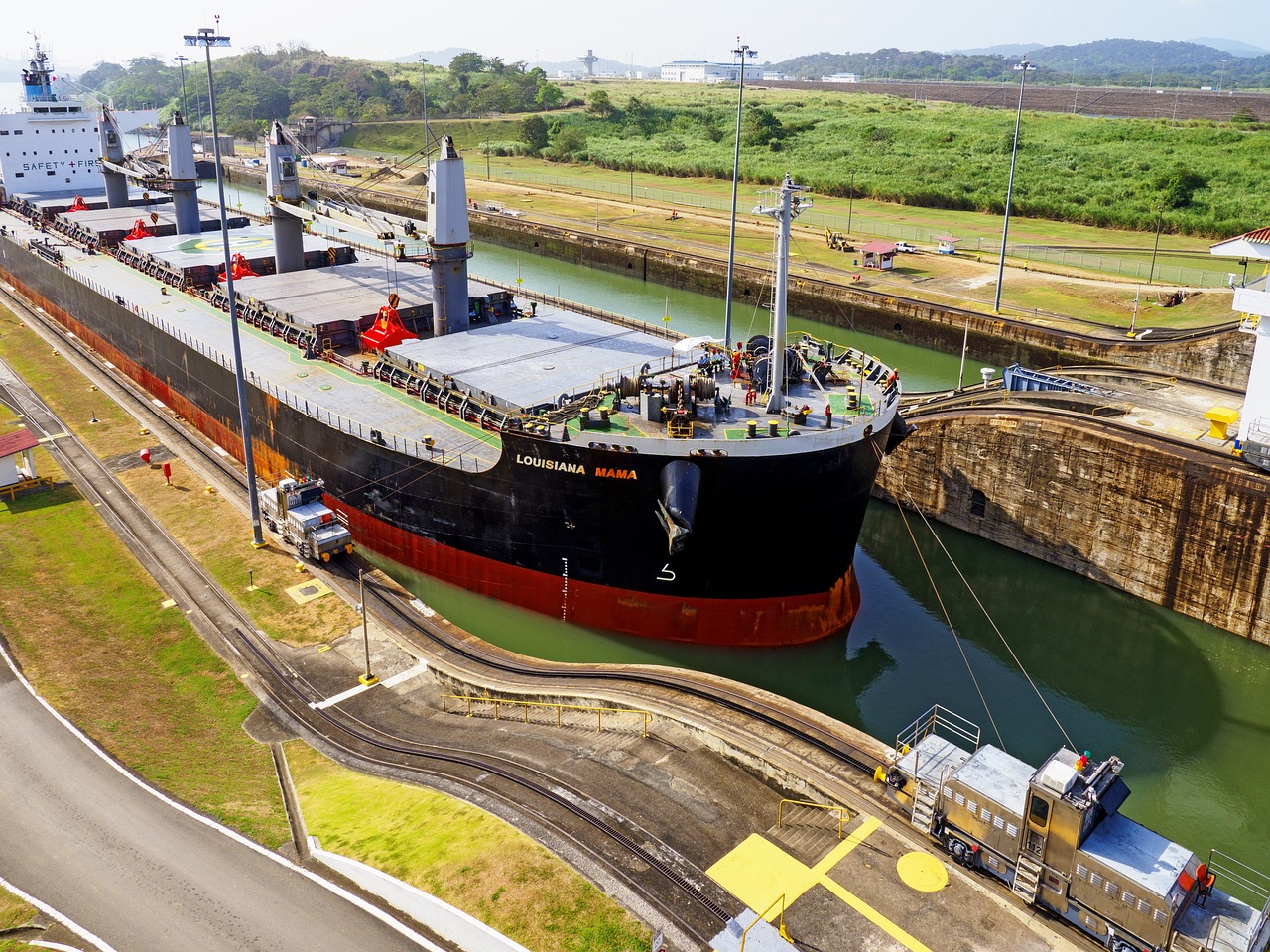Panama Canal: limited access causes rise in costs

Slots reduced to 18 vessels per day
Prices are going up?
Panama has been experiencing one of its driest seasons on record (ESA, 2023) Due to El Niño, the average accumulated rainfall in the watershed for 2023 is 25.6% less than the average over the past 73 years. Lower water levels translate to ships carrying less cargo and each container costing more.
The Panama Canal provides accessibility that strategically connects the commercial activities in the Atlantic and Pacific Ocean that serves all global markets from Asia, Europe, North and South America. Nearly 3% of global maritime trade volumes transit through the Panama Canal, most of which are dry bulk carriers, followed by container ships, chemical and crude product tankers, and liquified petroleum gas carriers. As of September 2023, 81% of the market segments that have transited in the Panama Canal are:
- Container
- Dry Bulk
- Chemical Tankers
- LPG Careers
- Vehicle Carriers
The Canal uses a system of locks that function as water lifts where the Gatun Lake is a vital water source needed to operate the locks each time a ship passes through.
The Panama Canal will further reduce their transit capacity as the expected rainfall projections in the coming weeks to be 38% less until the end of the year. Further reduction on the number of booking slots available will take effect on the amount of cargo passing through the canal.
The latest advisory by the Panama Canal Authority on October 30th announced that the daily booking slots from November 3rd to November 6th will be at 25 per day. From November 20th , the daily booking will be cut to 24 per day and with December 31st to be further reduced to 22 per day.
More adjustments in the daily transit numbers will be made depending on the rainfall received in the Canal watershed and the level of Gatun Lake where booking slot availability is expected to be reduced to 18 per day starting February 1st, 2024.
Starting beginning of November, the Panama Canal Authority is implementing additional vessel reductions in an effort to conserve water as a drought exacerbated by a severe El Nino weather system continues to plague water levels in the locks of the key global trade conduit.
According to Panama Canal authorities, the drought requires them to reduce the number of daily transits from 29 to 25 ships and in the proceeding weeks, they will reduce vessels transits even more until it declines to 18 ships a day in February. That represents between 40%-50% of full capacity. Under normal conditions, between 34-36 vessels traversed the canal daily. The drought and vessel reductions are having a major impact on the flow of trade, according to data from CNBC Supply Chain providers. Shipping containers going through the Panama Canal to the U.S. East Coast are being delayed in select ports, with the Port of Charleston seeing the longest in delays.
Sources:
The European Space Agency (2023). Earth from Space: Panama Canal. [online] www.esa.int. Available at: https://www.esa.int/ESA_Multimedia/Images/2023/10/Earth_from_Space_Panama_Canal [Accessed 2 Nov. 2023].
https://www.nytimes.com/2023/11/01/business/economy/panama-canal-drought-shipping.html